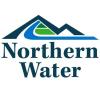Supporting Resilient Planning Among Regional Water Providers
Water supplies are already stressed in the Intermountain West (Averyt et al. 2013, Lukas and Payton 2020), and water managers increasingly need to understand conditions under which streamflow forecast accuracy may be degraded. Based on input from water entities, we seek to identify where forecast information may be vulnerable and provide the regional water management community with a systematic look at their risk alternatives. For example, snowpack information is central to water supply forecasts (e.g. Page and Dilling, 2019), yet there is strong consensus that future warming will reduce snow, with potentially critical impacts for forecasting.
This project leverages the long-standing connections between WWA and regional water entities, as well as the physical hydrology and modeling expertise of Co-PI Livneh and his research group. We plan to work with partners like Denver Water, the Colorado Basin River Forecast Center (CBRFC), Northern Water, the Water Utilities Climate Alliance (WUCA), and smaller utilities that have more limited in-house capacity to interpret water supply forecasts.
In phase 1 of this project (2021-2024), we will leverage recent research to evaluate the robustness of current snow-based water supply indicators, expanding our focus on wet and normal precipitation years. This includes quantifying water supply prediction errors from historical years, particularly ‘case study’ years identified by utilities, and identifying whether there is a tendency for larger errors associated with wet, normal, or dry years. Based on knowledge gained from past interactions with regional water entities (e.g. Page and Dilling 2019), we will focus on the two most commonly referenced streamflow forecast products: NRCS-type statistical forecasts (Pagano et al. 2009) and CBRFC-type Ensemble Streamflow Prediction (Wood and Schaake 2008).
In phase 2 of this project (2025-2026), we will explore the implications of projected changes in hydrology on adaptive capacity and resilience in partnership with water managers. Using direct input from large and smaller water utilities, we will analyze how future changes in snowpack and ancillary hydrology information (precipitation, soil moisture, etc.) affect the robustness of water supply predictions, including during wet and normal precipitation years. We will explore how utilities can utilize project findings to increase water system resilience through improved streamflow forecasting, and we will develop products and outputs that support this use.

